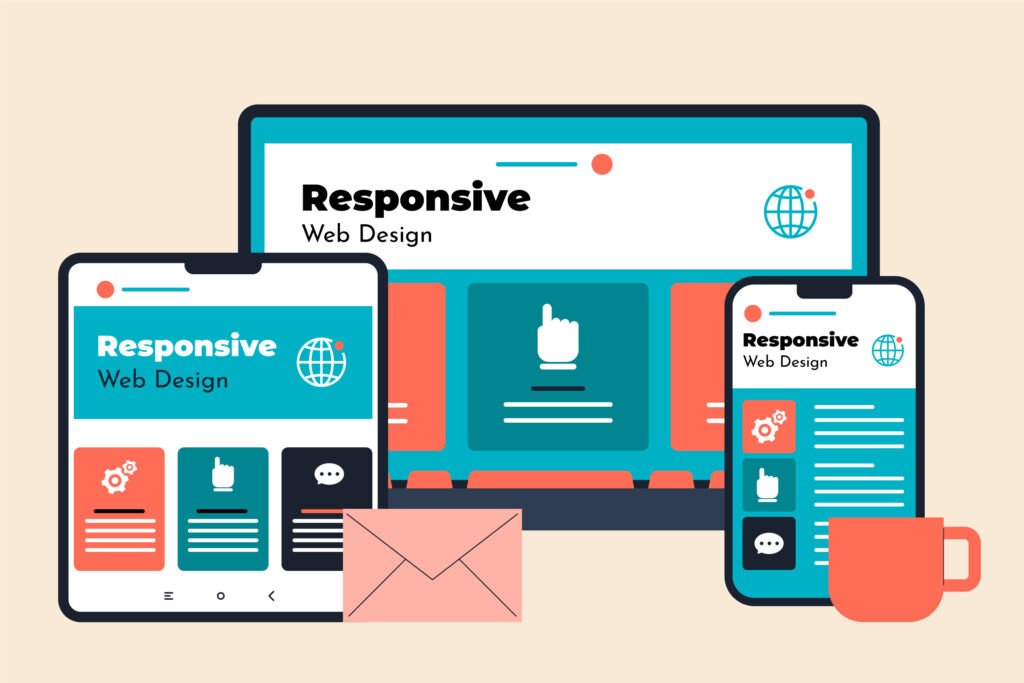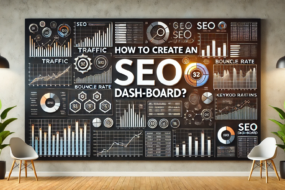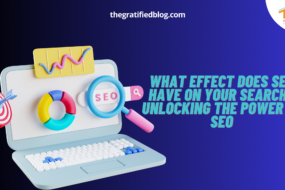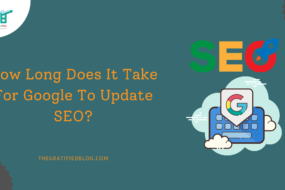
Search visibility score is simply the percentage of clicks one estimates and receives based on their organic rankings across all the keywords you monitor in your campaign. Also, it is one of the first metrics you’ll see on your campaign dashboard. SEO visibility is a metric that tells you the percentage of potential organic clicks (out of SERPs) a website gets for a keyword.
To put it differently, regarding raw traffic numbers, SEO visibility must be understood. It is more about your rank in the SERPs themselves than your competitors.
Search visibility will remain at the top of each tab of your SEO campaign’s position. And it might be for other drives: Assessing, Engines, and contests—everything except opportunities. It’ll also be upgraded based on what you’re looking at. For example, the Engines tab will split down the Search Visibility score depending on the engines you’re tracking. The contest will do the same thing for you vs. your competitors.
How Search Visibility Is Calculated?
- You are taking all your positions for every one of your search phrases.
- Applying an estimated click-through rate (CTR) based on each ranking position. The CTR calculation ensures higher ranking keywords are appropriately weighted in the score.
- You are multiplying the sum of your crucial phrase position with the sum of your CTRs and dividing by the number of keywords you’re monitoring in that Campaign, giving you a single metric of 0% -100%, calculated to two decimal points.
Here is an example of how search visibility is calculated:
- Suppose your blog ranks on an average of 10th on ten search phrases.
- You get an average of 100 clicks on each key phrase, and each receives a search impression of 1000.
- Your CTR would be 100/1000 = 0.1% for each key phrase.
- So, your search visibility score would be (Sum Of Your CTR on all key phrases) X (Sum of the position of those keywords) / Number of critical phrases.
- Means, (0.1 x 10) X (10 x 10) / 10. Makes, 100/10 = 10

A search visibility score of 0 means you don’t have any pages ranking in the top 50 areas in the SERPs. And if you have a score of 100 percent, then you have all the ranking positions for your keywords. Realistically, getting a website to score above the mid-40s for non-branded keyword phrases is scarce.
It is possible to use this score to keep track of your search engine visibility progress overall, compare your site’s visibility with that of the competition, and compare your visibility across different search engines and places.
10 Ways To Increase Your Search Visibility
The site-wide number takes all of your rankings into account. It gives you a prominence score based on each keyword you rank for. With this explanation out of the way, here is how to boost your search engine visibility:
Target The Right Keywords

Suppose your search engine visibility differs from where you want it to be. It’s probably because you are targeting keywords that are way too aggressive in reality. It is a mistake that we make back daily.
When we found a keyword with 9K searches each month, we might say, “Great! That sounds like a keyword I should target”. Regrettably, lots of such keywords had superb high KD scores. This means we have zero chance of ranking on such keywords even if the articles are the best.
With that said, the best way to cope with this is first to identify your audience and plan a keyword strategy. But how do you place your audience?
Simply ask yourself the right questions, answer them, and plan keyword strategies that can help you boost your search visibility.
Who Are Your Existing Customers: Identifying your present customers’ key features may provide clues about your prospects. Examine qualitative and quantitative information, from age and sex to purchase behavior and web page involvement. Each of these will help paint a picture of what you ought to be composing.
Who’s Drawn To Your Competitors: Discover what individuals engage with opponents. Look at social networking accounts, site comments, and client testimonials. What can it be that the individuals that are fulfilled enjoy? There is a great deal to learn from companies like yours.
What You Need To Offer: Consider your services and products and what they bring to your prospects.
Who’d Gain From These Outcomes: Research your audience to see what you’re doing well, what you may improve, and what sort of information people need to find out from you.
Focus On Long Tail Keywords
After researching, creating, and picking your target keywords, the next thing to concentrate on is the length. There are typically three versions available:
Head Keywords: These keywords hold just one specific word that accurately highlights the content. For example, if your company provides car insurance and you are posting about said information, the head keyword you can apply is “insurance.”
Middle Keywords: These short-tail keywords mainly consist of two words. Considering the previous example, the keyword here is “car insurance.”
Long Tail Keywords: Long-tail keywords involve three or more words, such as “affordable car insurance” or “how to get car insurance.”
Power of Long Tail Keywords
For heightening search visibility, targeting long-tail keywords brings higher value (Not in terms of traffic but search visibility score) and has lower competition than middle keywords. Statistically, long-tail keywords with four words have twice as high CTR as shorter keywords.
Long-tail keywords have a low competition rate and monthly search volume. This is one reason why adding it to your content would help your web page rank better. Long-tail keywords are more suitable for attracting users at the end of the funnel.
Those searching for long-term keywords like the above examples already know what they seek. At this point, they just want more detailed information to decide if they want to buy a product or service. These people are sure-shot of their problem and will only click on articles that offer them what they need.
Therefore, if you add a long-tail keyword such as “top car insurance plan under budget,” consumers would likely enter your page instead of those with only head keywords.
These keywords are effective for targeting geographical location-based audiences as well. A higher quantity of long-tail keywords in the content ensures more localized search visibility in the SERP results. Consequently, add the target location’s name in the keyword text.
Is Your Website Mobile Responsive?

Mobile optimization is essential to maintain or improve your SERP rank and is crucial in SEO and web design. Factors such as loading time, layout, font size, mobile responsiveness, and optimized content boost your search engine ranking. A mobile-optimized website aligns with your broader digital marketing strategy and facilitates remarketing efforts. By ensuring seamless user experience across different devices, you can enhance engagement, increase conversions, and drive sustained organic traffic to your site.
Beyond this, your mobile site also has to be simple to navigate. Suppose you have ever encountered a site that has yet to be equipped with mobile devices in your mind. You understand how frustrating the experience could be. Designing a design, especially for mobile (think a lot of vertical scrolling and easy-to-push buttons), will guarantee that if users land on the webpage, they remain on it.
Optimizing a domain for mobile users is a significant facet of a more extensive digital advertising strategy. In the aggressive e-commerce business, marketers must keep supplying consistent and personalized content across stations to ensure their content on those stations is constructed to run as quickly and efficiently as possible.
Whether your website is mobile-friendly and you wish to enhance it further or are playing catch-up in capturing mobile visits, staying along with search engine algorithms’ strategy for mobile sites is crucial for better search visibility.
Improve Your Meta Details
Organic click-through rate is a KEY Google ranking signal. And the higher your CTR, the higher your website will rank in Google. The question is: How do you get more people to click your result and get more search visibility on relevant keywords?
The answer is simple: Write title tags and meta descriptions that make your result more compelling.
Specifically, write title tags that catch attention without clickbait, and like your meta descriptions to sell your content.
Build A “Good Backlink” Profile
This guide on how to build quality backlinks by Wes McDowell is fantastic and can help you understand how to make excellent backlinks easily for better search visibility. Thanks, Wes McDowell, for this!
No one can doubt that getting good search visibility and a good backlink profile is a must. This is something that I should be putting in the first point. When I say “Good backlink profile,” it differs from a huge backlink profile.
You can quickly get backlinks from a website with low authority scores and stats, which helps you increase the number of backlinks in your profile and improve your search visibility. However, such backlinks only benefit a little. You have to focus on getting backlinks from high-quality domains. You can see this as one backlink from a high-authority website is worth more than ten backlinks from a low-authority website.
Also, relevancy plays an essential part in it. For example, if your website is about SEO, and you got a backlink from a site in the fitness niche, it might help your rankings. A little. Very little. Or you might only if you are lucky.
Contrary to that, a backlink on a relevant anchor from an SEO or digital marketing-related website might have a much more significant impact on your search visibility.
Content Marketing As A Strategy For Better Search Visibility
Content makes it possible to associate with every client, win their confidence, and construct and maintain a connection. But it can also distinguish you from the competition on search engines and help you demonstrate your brand’s authority in your market by getting more search visibility while building a solid reputation and recognition.
A successful content advertising strategy provides the very best search visibility. You may opt to set your articles out there using in-depth how-to articles in your blog, a column in the regional paper or business journal, a billboard in your town’s airport, humorous tweets, or a funny Instagram story, the only station that suits every reason you have for distributing and promoting your articles is the organic hunt.
Organic search traffic would be your super KPIs of article promotion. Apart from individuals discovering your articles in reaction to their hunts — issues, queries, or curiosities — what exactly are you discussing information for?
While determining a specific ROI for article promotion, SEO and organic research can help you specify key performance indicators to measure and isolate the success metrics for KPIs to calculate the improvement in your search visibility.
Use Schema Data Structuring
To refine the quality of your web content or SEO visibility score, you can use the Schema markup approach. To elaborate, this structured data is helpful for search engines to judge the web page content better. Consequently, the platforms can recommend better quality content that would satisfy the interest of search engine users.
How about you? The schema markup microdata promptly generates page descriptions in the SERPs. Such snippets of data are comparatively more informative than the traditionally available search engine result descriptions. The description may include special features like a sitewide search field, visuals, or additional details.
Statistically, richer snippet results have a higher CTR of 58%, while non-rich ones have only 41% CTR. Therefore, using the structured data approach for your web content, your website would gain more excellent CTRs and search visibility. Your web page may even advance to the SERP featured posts list.
Increase the Readability Quotient of Content

It is essential to consider the readability and content optimization factors for more powerful customer reach via SERP ranking and eventual CTR growth. Websites that are easily read and well-optimized have achieved a minimum bounce rate, improving their Google search ranking. By optimizing your content, you can attract and engage your target audience, increase visibility, and drive more organic traffic to your website.
The amount of time visitors stay on a page does affect its SEO visibility score. One piece of evidence in this context is the Google RankBrain algorithm, which concentrates mainly on the users’ search intent. Google organizes the search engine results accordingly.
After noticing that a page receives a higher bounce rate, this algorithm ranks it lower in the SERP rankings. Since RankBrain centers mainly around the users’ intent, it assesses based on why a reader may or may not open the link. Here, the software typically deduces that the page has no relevant content and does not earn a high ranking.
Regarding time spent on websites, statistically, 2 minutes or more is an acceptable limit and can bring good engagement. At the same time, lower than 30 seconds is considered low (Though this depends on the content also).
Content Readability Score: Now that you know the “why,” here are tips on “how” you can amplify your web content’s readability score.
Shorter Paragraphs: The SEO visibility score of web content automatically dips in quality if there are huge blocks of paragraphs. Instead, readers find it easier to travel from Point 1 to Point 2 if the paragraphs are shortened. They can return to a previous point more easily and sooner if the entire content is broken into tiny paragraphs. Hence, try to leave over three sentences out of each paragraph.
Headings/Subheadings: Notice the different web content already available with a high SEO visibility score- what do they have in common? Their content would have a well-optimized structure and content breakdown. To achieve this yourself, demarcate your entire content with well-placed preview-worthy headings and subheadings.
In this context, the Google algorithm would likely give your content a higher SEO visibility score if the headings/sub-heads have LSI words and keywords.
Shorter Sentences: To enhance search visibility, make the sentences of your content concise. This automatically boosts readability since the software algorithm of Google cannot correctly evaluate long, complex sentences and their text clarity. You can find many online tools or get professional help to reduce the length of the content text to a manageable amount. Keeping the sentences 20 words or less should suffice.
Transitional Phrases: Such words help connect one paragraph to the next’ this smooths out the content readability flow. For example, you are reading a web page and notice the following paragraph starting with an entirely different point. Both paragraphs may have the necessary information about the topic. Yet, the content flow feels disjointed.
BONUS TIP
The font size affects the readability score, especially if your content is mobile-optimized. Tiny fonts must be legible and can put off readers since it would strain their eyes.
Maintain Regularity In Posting Content
One guaranteed method for increasing any website’s search visibility is to prioritize posting frequently. If you publish new posts at regular intervals on your website, the engagement rate of your website will increase.
As for increasing the SEO visibility score this way, consistency is critical. Not only must you publish content regularly, but also make sure the quality of the content and structure is top-notch.
Google algorithm recognizes this as an essential factor for determining the value of a website for search engine users. After that, your site’s SERP rank would rise.
Site Speed And Core Web Vitals

3D illustration of a desktop computer with a web page, speedometer and clock icons, rocket launch, and wi-fi router isolated on a white background. Website loading speed test. Internet traffic optimization
Both the speed of the website and the factor of ‘Core Web Vitals’ are worth mentioning in the context of magnifying your website’s search visibility.
Firstly, let’s come to site speed. The loading speed of websites differs per device, like mobile phones and desktops. The network type settles this: mobile data runs on 3G/4G networks, while desktops typically operate via network cables. Notably, the network speed for mobile phones comparatively lags more.
Users opening your website via their phones may jump to your competitors’ instead if they provide better site speed than your site. In the SERP rankings, Google prioritizes websites with faster speed and raises their score, so you should focus on this.
As for Core Web Vitals, Google centers on the website factors contributing to the user experience. In the context of Google search engine ranking, the ‘page experience’ is a leading ranking factor. Here, you should attend to augmenting particular factors in your website to enhance its ‘page experience’ quotient:
- Safe-browsing capacity- no malware
- HTTPS
- No interstitial, pop-up ads
- Mobile adaptability
Heat Maps

Content creators and marketing experts consider elements that would help improve their website’s user interaction rates. One tool you can adopt in that context favorably is a heatmap.
As its name suggests, this tool highlights the part of the site that is ‘hot,’ i.e., attracts the most viewers. This is useful for brands to figure out the user behavior of their target audience and plan SERP ranking-boost tactics accordingly. With a heat map, you can visually notice the engagement levels of your consumers. Here, red and blue indicate the highest and lowest rates, respectively.
You must be wondering how Google utilizes heatmaps for website SERP rankings. The truth is that they do not. Instead, this data is more advantageous for website owners and content creators. You can evaluate which parts of your site are grabbing the most clicks.
A good UX is one of the most essential things for tweaking your website’s search visibility and SERP ranking. You can be like, “Yeah, I am getting traffic, and now, who cares about the website UX?” If you do so, then be ready to lose your search visibility soon.
Heatmaps, in most cases, are used to conduct A/B testing. For example, if you have two internal links on your web page, you can use the heatmap to investigate both links. You can adjust the anchor text for the one with a lesser CTR to make it more engaging. Then, see if it performs better.
Also, what about bounce rates? If a user hangs around your website and leaves just after checking that page, the bounce rate will increase and affect your search visibility!
However, with heat maps, you can try A/B testing by adding and optimizing internal links, CTA’s, etc., to get a better bounce rate.
Conclusion
The visibility of your website on search engines with that of your most essential competitors permits you to place clear priorities concerning the keywords you want to rank high in SEO. And this ultimately can help correct search engine optimization strategy.
Here is to your sites for getting higher positions and better search visibility. But there is still time if you aren’t working on enhancing it.








6 replies on “Search Visibility: 10 Ways To Increase It By 250% Quick!”
Wow, awesome blog layout! How long have you been blogging for? you make blogging look easy. The overall look of your web site is magnificent, as well as the content!
Piece of writing writing is also a excitement, if you know afterward you can write or else it is complicated to write.
Hi there, I enjoy reading all of your article post. I
wanted to write a little comment to support you.
This post is genuinely a nice one it assists new the web users, who are wishing in favor of blogging.
Google
Here is a superb Blog You might Uncover Exciting that we encourage you to visit.
Nice postee!